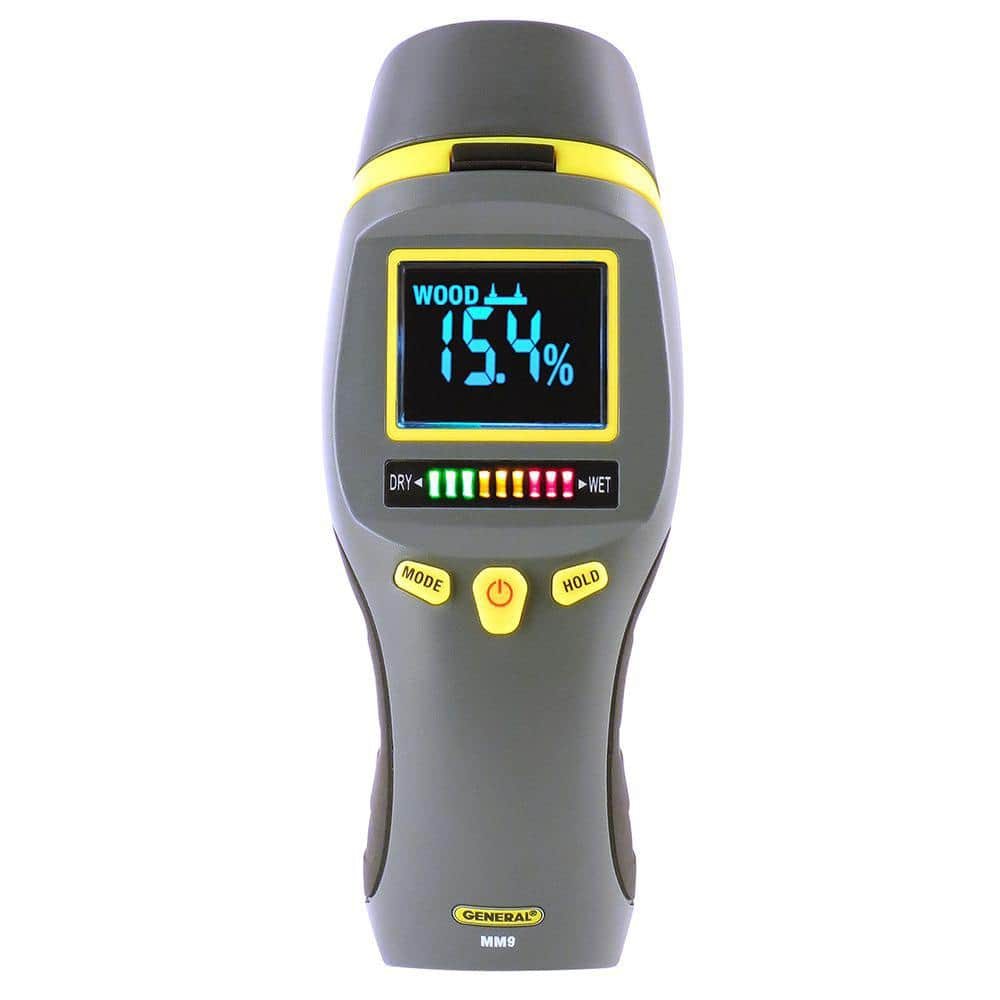Comprehending the Different Kinds Of Moisture Meters and Their Applications
Wiki Article
The Ultimate Guide to Moisture Meters: A Comprehensive Introduction and Exactly How They Can Conserve You Money
In the realm of structure upkeep, building, and different markets, the value of precisely measuring moisture degrees can not be overemphasized. Moisture meters work as important devices in identifying and checking moisture content in products, aiding in preventing pricey damages and making certain the high quality of products. Understanding the subtleties of different sorts of moisture meters, their applications, and the possible cost-saving advantages they offer can be a game-changer for services and specialists alike. Finding how these devices can not just streamline processes yet likewise add to economic cost savings is a trip worth getting started on.Kinds of Moisture Meters
Various sorts of dampness meters are readily available for various applications in various sectors. One typical type is the pin-type dampness meter, which measures the electrical resistance between two pins put right into a product. This type appropriates for wood, drywall, and various other structure materials. Pinless wetness meters, on the various other hand, use electro-magnetic sensor plates to check a bigger area without triggering damage to the product's surface. These meters are excellent for rapidly evaluating dampness levels in large locations such as floorings and wall surfaces.In addition, there are likewise specialty dampness meters designed for certain materials like grain, soil, or hay. These meters supply precise dampness readings customized to the distinct homes of the product being checked. Infrared wetness meters measure the thermal residential properties of a product to identify its moisture web content non-invasively, making them beneficial for applications where pin or pinless meters may not appropriate. Comprehending the different sorts of dampness meters available can assist sectors pick the most appropriate device for their details wetness measurement demands.

Advantages of Using Moisture Meters

Furthermore, utilizing moisture meters can lead to boosted power effectiveness. In farming settings, dampness meters play an essential function in enhancing plant yields by enabling farmers to keep an eye on dirt wetness degrees and make notified irrigation choices.
How to Choose the Right Moisture Meter
Selecting the proper dampness meter involves considering essential elements such as product compatibility, measurement variety, and calibration accuracy. When choosing a dampness meter, it's necessary to make sure that the meter is appropriate for the certain material you will certainly be testing. Different products have differing address electric residential or commercial properties that can influence wetness readings, so picking a meter created for your product is important for precise outcomes. Additionally, think about the measurement series of the dampness meter. Make certain that the meter can discover moisture degrees within the variety needed for your applications. Calibration precision is an additional vital element to bear in mind (Moisture Meter). Choose a moisture meter with trustworthy calibration to make sure constant and precise analyses. Some meters might need periodic calibration changes, so recognizing the calibration process is essential. By very carefully reviewing these elements, you can pick a moisture meter that fulfills your requirements and provides exact wetness measurements for your tasks.Appropriate Techniques for Moisture Meter Usage
To make certain precise moisture readings and maximize the efficiency of a wetness meter, using appropriate strategies is necessary. When making use of a pin-type moisture meter, place the pins or probes right into the product being tested till they make complete contact. By following these correct methods, users can depend on their wetness meter my review here to give reliable wetness levels, helping in preventing pricey damages or ensuring high quality in numerous applications.
Cost Cost Savings Via Moisture Meter Applications
Exactly how can the calculated application of wetness meters result in substantial expense savings across different sectors? Moisture meters play a vital duty in cost financial savings by protecting against prospective damage and making certain quality assurance in different markets. In the agriculture sector, dampness meters aid in identifying the optimum time for harvesting crops, stopping excess or over-drying dampness that can affect the final item's quality. This specific surveillance assists farmers avoid unneeded losses and optimize their return.

In addition, in the food handling industry, dampness meters are crucial for checking product quality and ensuring compliance with safety policies. By properly measuring wetness content in foodstuff, producers can avoid perishing, preserve freshness, and reduce waste, leading to significant cost savings. In general, the calculated application of wetness meters is an important investment that can lead to considerable cost decreases and boosted efficiency across different sectors.
Conclusion
In conclusion, dampness meters are important devices for discovering and determining moisture levels in different materials. By making use of the right dampness meter and following appropriate methods, individuals can properly avoid expensive problems triggered by excess wetness.Dampness meters serve as important tools in discovering and keeping track of moisture web content in products, helping in preventing pricey damages and ensuring the quality of items. Infrared moisture meters gauge the thermal buildings of a product to establish its dampness content non-invasively, making them helpful for applications where pin or pinless meters may not be ideal.Dampness meters use indispensable advantages in accurately keeping an eye on and analyzing dampness levels in diverse materials and settings. In agricultural settings, dampness meters play an essential function in enhancing plant yields by making it possible for farmers to check dirt moisture levels and make educated irrigation choices.In verdict, wetness meters are useful tools for spotting and measuring dampness levels in numerous products.
Report this wiki page